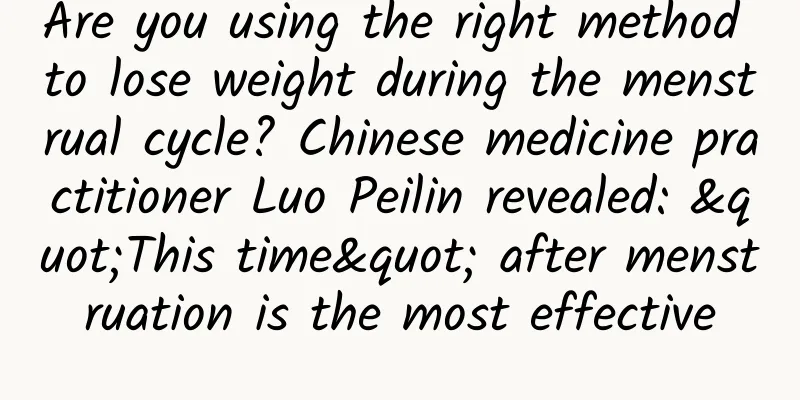Can you get pregnant with adenomyosis? The correct answer is this

|
Many people want to know, because adenomyosis is a widespread disease, which brings a lot of suffering to everyone and endangers everyone's health. In order to avoid the occurrence of the disease, everyone needs to correctly understand the disease. So, can adenomyosis be cured when you get pregnant and have a child? Endometriosis is a condition in which the uterine lining (endometrium) grows through the muscular wall of the uterus (myometrium). Adenomyosis can cause menstrual cramps, decreased abdominal pressure, and bloating before periods, and can cause heavy periods. The condition can be distributed throughout the uterus or confined to one area. Although adenomyosis is considered a benign (not life-threatening) condition, the frequent pain and heavy bleeding associated with it can negatively impact a woman's quality of life. What are the symptoms of adenomyosis? While some women diagnosed with adenomyosis experience no symptoms, the disease may cause: Heavy menstrual bleeding Severe menstrual cramps Abdominal pressure and bloating Who gets adenomyosis? Adenomyosis is a common condition. It most often develops in middle-aged women and those who have had children. Some studies also suggest that women who have had uterine surgery may be at risk for adenomyosis. While the cause of adenomyosis is unknown, research suggests that various hormones — including estrogen, progesterone, prolactin, and follicle-stimulating hormone — may trigger the condition. Diagnosing adenomyosis Until recently, the only sure way to diagnose adenomyosis was to perform a hysterectomy and examine the uterine tissue under a microscope. However, imaging technology has allowed doctors to identify adenomyosis without surgery. Using an MRI or transvaginal ultrasound, doctors can see the hallmarks of the disease in the uterus. If your doctor suspects adenomyosis, the first step is a physical exam. A pelvic exam may show an enlarged, tender uterus. An ultrasound allows your doctor to see the uterus, endometrium, and uterine muscle wall. Although an ultrasound cannot definitively diagnose adenomyosis, it can help rule out other conditions with similar symptoms. Another technique sometimes used to help evaluate symptoms associated with adenomyosis is sonohysterography. In sonohysterography, saline solution is injected into the uterus through a thin tube as an ultrasound wave. MRI – magnetic resonance imaging – can be used to confirm the diagnosis of adenomyosis in women with abnormal uterine bleeding. Due to similar symptoms, adenomyosis is often misdiagnosed as uterine fibroids. However, the two conditions are not the same. While fibroids are benign tumors that grow on the lining of the uterus or uterus, adenomyosis has fewer cells in the lining of the uterus. An accurate diagnosis is key to choosing the right treatment. Can pregnancy and childbirth with adenomyosis be cured? Let's listen to the expert's introduction below. It may not be cured. The possibility of cure after pregnancy and childbirth is extremely low. In clinical practice, many women who were lucky enough to get pregnant and childbirth had their adenomyosis symptoms only alleviated a little, but they were still tortured by pain. It is recommended to stop all medications immediately once you are pregnant and go to a local hospital to preserve the fetus until the fourth month, which is safer. What kind of people are prone to adenomyosis? Experts say: office workers are prone to adenomyosis! Why are white-collar workers prone to adenomyosis? There are mainly the following reasons why white-collar workers are prone to adenomyosis: 1. Pursuing "perfection" during childbirth and abusing cesarean section. Many white-collar beauties insist on having a cesarean section when they are pregnant and about to give birth. This can keep the vagina tight and also reduce the severe pain during vaginal delivery. However, many people accidentally bring endometrial fragments into the abdominal wall incision during cesarean section. These endometriums will bleed in the incision scar with each menstruation, forming hematomas or adhesions, and forming adenomyosis. The monthly pain makes them sad! The uterus is gradually enlarged, the endometrium is getting thicker and thicker, and even adenomyomas grow on the posterior or anterior wall of the uterus. Every month, these white-collar beauties will face increased menstrual volume, more blood clots, darker color, severe pain, and even vomiting, feeling heavy and emotionally changing. Therefore, we should advocate vaginal delivery in a natural way and follow the human reproductive process. Second, for career or other reasons, artificial abortion is performed to terminate pregnancy, which is a common cause of the disease. Many women, for the sake of their careers, choose to have an abortion once they become pregnant. However, excessive force in intrauterine operations such as artificial abortion and diagnostic curettage will damage the uterine muscle wall. The endometrium will then grow into the uterine muscle layer along the damaged area, inducing adenomyosis. 3. White-collar beauties blindly pursue a high-quality life and consume health products and foods that can easily increase estrogen. Some white-collar beauties, in pursuit of a high-quality life or to show the beauty of their bodies, continue to consume health products or foods that can easily increase estrogen. They eat honey, seafood, royal jelly, etc. every day, and also take some mineral essences. In fact, these are extremely unfavorable to them and are most likely to induce adenomyosis. Because during surgery, the residual endometrial debris is transferred to the surface of the tissue, which is originally a slower growth process, but under the stimulation and action of estrogen, it becomes larger and produces various clinical symptoms. In addition, there are also some white-collar beauties with mild adenomyosis who do not pay attention to diet, and even during conservative treatment, continue to consume foods or health products that can easily increase estrogen, which further aggravates the condition and eventually has to choose the tragedy of surgical removal of the uterus! The endometrium invades the uterine muscle layer but does not extend beyond the uterus. This condition is called adenomyosis. Adenomyosis is a progressive disease, which is often related to uterine damage caused by artificial abortion and IUD insertion. Dysmenorrhea is a common symptom. Dysmenorrhea caused by adenomyosis will gradually worsen. It can be severe colic or needle-like pain. Menstruation will become heavier, the menstrual period will be longer, and the menstrual blood will increase with blood clots. Patients will have symptoms of vomiting and diarrhea. As the disease progresses, heavy bleeding during menstruation will cause hemorrhagic anemia or even shock. In addition, the pregnancy rate of patients with adenomyosis is low. Although patients with mild adenomyosis still have the opportunity to become pregnant, as the disease accumulates and worsens, the pregnancy rate will gradually decrease. Even if patients with severe adenomyosis become pregnant, they may suffer miscarriage or premature birth, and may have complications such as uterine rupture or perforation, and postpartum hemorrhage caused by poor uterine contraction. |
<<: Is it serious to have uterine polyps? The consequences of delaying treatment are very serious.
>>: Do you know all this knowledge in the uterus pictures? You may not know this knowledge
Recommend
After the intrauterine adhesion surgery, the ring has moved down a little, can it be removed?
Whether the ring can be removed if it moves downw...
What tests should I go to the hospital for if I have irregular menstruation?
First, the doctor will ask about the patient'...
Why do people sweat after abortion?
Artificial abortion refers to artificial abortion...
Left lower abdominal pain without abnormal vaginal discharge
Pain in the left lower abdomen without abnormal v...
What are the symptoms of endometrial polyps?
Symptoms of endometrial polyps include irregular ...
What are the typical symptoms of adnexitis?
What are the typical symptoms of adnexitis? 1. Th...
Is it good to boil water with mugwort to treat cervical erosion? These methods can also be used to treat cervical erosion
Mugwort is a traditional Chinese medicine. Becaus...
Do you know about hysteroscopic abortion?
As more and more people undergo abortion , people...
How do I know if I have uterine adhesions?
To know whether you have intrauterine adhesions, ...
Three lines body shaping! KIMIKO solves the problem in one go
If you want to be "beautiful this summer&quo...
What are the symptoms of cervical erosion? Patients with cervical erosion will experience 5 abnormalities
Nowadays, many female patients are prone to gynec...
What causes cervicitis and how to treat it
Cervicitis is an inflammation of the cervix cause...
What should I do if I have back pain after ectopic pregnancy surgery?
What should I do if I have back pain after ectopi...
How are cervical warts transmitted?
Cervical warts are a term that troubles many men ...
What medicine can Gong Yanping be taken with to treat uterine fibroids? What medicine can Gong Yanping be taken with to treat uterine fibroids?
What medicine should Gong Yan Ping be taken with ...









